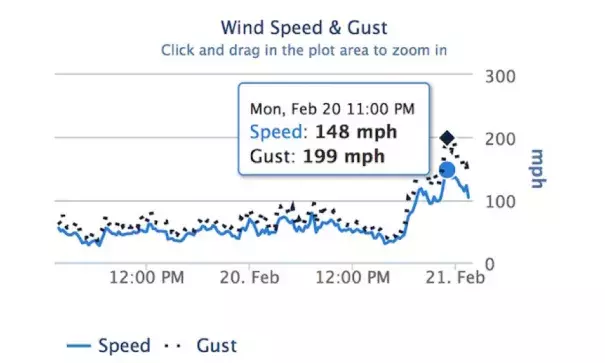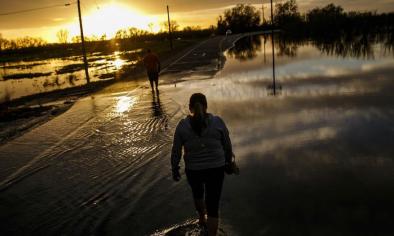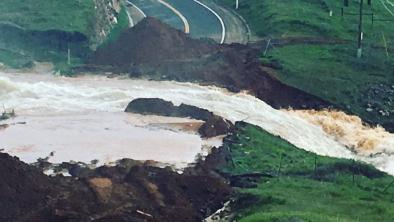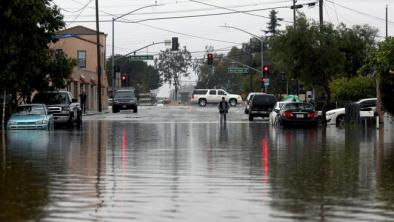More Floods and Evacuations in California--Plus Wind Gusts Topping 190 MPH

The atmospheric river that slammed the central third of California on Monday left its mark in multiple ways, including what could end up as the highest reliably recorded wind gusts for the state (see below). Fortunately, the storm underperformed somewhat when it came to rainfall, much like its older sibling that hit southern California last Friday. Rainfall amounts in Bay Area cities on Monday came in well short of the potential suggested by multiple model runs, although both San Francisco (2.16”) and San Jose (1.87”) managed to set rainfall records for the date.
Even if the rains of the last week haven’t lived up to model-based expectations, they have caused plenty of havoc. Power was knocked out to more than 100,000 people in the Los Angeles area on Friday, with several fatalities reported. More than two dozen debris flows had been recorded in nine counties as a result of the Sunday/Monday storm...One levee breach on Monday night in San Joaquin County was quickly repaired after some 500 people had been ordered to evacuate. Residents of the town of Wilton in southern Sacramento County were under a voluntary evacuation on Monday night, but the Cosumnes River ended up peaking at 12.06 feet, less than an inch above the 12-foot flood stage and more than 3 feet below predictions from earlier Monday.
The storms of the past week have added to multi-month precipitation totals that are getting steadily more impressive. Many points across central and northern California have already recorded more precipitation than they get on average in an entire October-to-September water year. As of 4:00 pm MST Monday, San Francisco International Airport had racked up 15.70” of rain since January 1. Phil Klotzbach (Colorado State University) noted that this is the fourth highest January-February total on record for the airport, where data collection began in 1945. By midnight Monday night, this year’s Jan-Feb total had climbed to 16.38”. Meanwhile, downtown San Francisco is already at its seventh wettest Jan-Feb in records going back to 1855, with 17.63” as of Wednesday morning. The station is likely to vault to at least fourth place by the time the month is done, but going any further will be a challenge, based on stats tweeted by Klotzbach. During the catastrophic Jan-Feb of 1862, downtown San Francisco recorded 31.89”.
...
Two high-elevation weather stations at California’s Squaw Valley resort experienced incredible winds on Monday night as the core of the jet stream associated with the atmospheric river came through, together with localized wind acceleration from a low-level jet encountering the Sierra crest. (Thanks to WU member BayFog for pointing out the multiscale interactions.] Between 10:45 pm and 11:00 pm PST, the Siberia (Sierra Crest)-Squaw station, or SIBSV--located at an elevation of 8700 feet near the top of Squaw Peak--recorded a peak wind gust of 193 mph, with sustained winds reported at 123 mph. During the same interval, only about two miles to the southeast, the Summit (Ward Mt)-Alpine station, or SUMAM--perched atop Mt. Ward at 8643 feet--recorded a gust to 199 mph, with sustained winds of 148 mph.
Extreme gusts over 150 mph are no stranger to the high Sierra. In a 2011 blog post, WU weather historian Christopher Burt referred to an unddated state record gust of 176 mph from the Mt. Ward station. Just last month, on January 8, the same station notched a 174-mph gust.
Related Content






